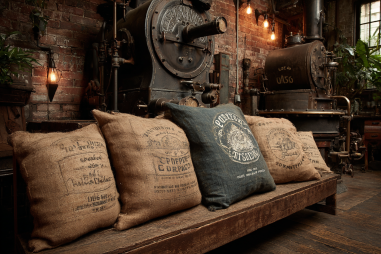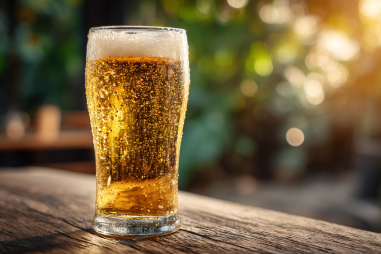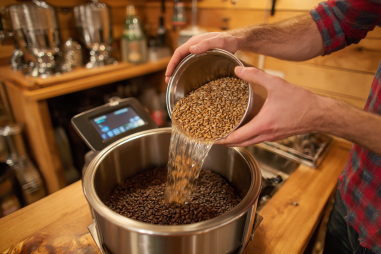Scottish Ale is a beloved style of beer known for its smooth, malty profile and subtle complexity. Rooted in Scotland’s rich brewing heritage, it’s a beer that often conjures images of cozy pubs and hearty meals. If you’ve ever wondered how Scottish Ale gets its distinctive flavor, the process is both an art and a science, blending traditional techniques with quality ingredients. In this guide, we’ll dive deep into each step of the Scottish Ale brewing process — from choosing the right malts and hops to the delicate fermentation and conditioning that helps develop its character. Whether you’re a homebrewer eager to craft your own version or simply curious about what goes into a good Scottish Ale, this step-by-step explanation will shed light on how this timeless beer comes to life.
Understanding the Key Ingredients in Scottish Ale
At the foundation of Scottish Ale brewing are three primary ingredients: malts, hops, and yeast. Getting the right balance and quality here sets the stage for everything that follows.
Malts: The Heart of Scottish Ale
Scottish Ale is known for its malt-forward taste, often described as smooth, slightly sweet, and rich with caramel and toasty notes. This comes mainly from the use of pale malts combined with specialty malts. Typically, brewers use Scottish ale malt or a base pale malt as the backbone. To add layers of flavor and color, they’ll incorporate crystal malts or medium-colored roasted malts with a gentle roast character. These malts don’t create a heavy bitterness but rather deepen the malt complexity.
Hops: Subtle and Supporting
Unlike more hop-forward beer styles such as IPAs, Scottish Ale features low to moderate hop bitterness. Traditionally, mild British hop varieties such as Fuggles or East Kent Goldings are used. These hops provide just enough bitterness to balance the malts without overshadowing them. Sometimes, Scottish brewers opt for a dry-hopping method to add a subtle floral aroma, but hops always play a supporting role rather than the star.
Yeast: The Fermentation Artist
The yeast strain is crucial to the profile of Scottish Ale. Typically, ale yeast with moderate attenuation and a slightly fruity profile is chosen. These yeast strains ferment the sugars from the malt efficiently but leave a bit of residual sweetness that complements the malty base. The yeast character is clean, not overly estery or funky, preserving the ale’s smoothness.
Mashing and Wort Preparation: Unlocking the Malt’s Potential
Mashing is where the malted grains meet hot water to break down starches into fermentable sugars. For Scottish Ale, the mash temperature usually ranges between 148°F and 155°F (64°C to 68°C), favoring a fuller body and flocculent mouthfeel. This temperature range supports good enzymatic activity while retaining some dextrins, the sugars that add sweetness and body.
The mash may last anywhere from 60 to 90 minutes to ensure maximum conversion. Traditional Scottish brewers often use single infusion mashing, but some modern brewers incorporate step mashes to optimize flavor extraction.
After mashing, the wort (the sugary liquid extracted from the grains) is lautered — a process that separates the liquid from the spent grain. The wort is then collected and prepared for boiling.
Boiling and Hopping Techniques
Boiling the wort serves multiple purposes: sterilizing the liquid, halting enzymatic activity, and enabling hop additions to impart bitterness and aroma. For Scottish Ale, the boil typically lasts 60 minutes.
Hopping schedules tend to be restrained. Early hop additions are geared toward bitterness to offset the malt sweetness, but hop quantities remain modest. Some brewers add hops mid-boil or late in the boil to introduce gentle hop aroma without overpowering the malt character.
In certain recipes, a small amount of peat-smoked malt or naturally carbonated water from Scottish sources might be incorporated to give the brew a distinctive regional flair, although this is less common in modern Scottish Ale production.
Fermentation and Conditioning: Where Flavor Develops
Once boiling and hopping are completed, the wort is cooled rapidly and transferred to the fermenter. The yeast is then pitched, and fermentation begins at temperatures ranging from 65°F to 68°F (18°C to 20°C). Maintaining a steady temperature within this range encourages healthy yeast activity without producing off-flavors.
Fermentation usually lasts one to two weeks, during which the yeast consumes the sugars, producing alcohol and carbon dioxide. A defining trait of Scottish Ale is its mild residual sweetness, so brewers avoid letting fermentation go too dry — leaving some unfermented sugars to contribute body and smoothness.
After primary fermentation, conditioning is essential. This involves storing the beer at cooler temperatures (often near 35°F to 45°F or 2°C to 7°C) for several weeks to months. This cold conditioning allows flavors to mellow and any harsh yeast byproducts to dissipate. Many traditional Scottish breweries also practice cask conditioning, where the beer is naturally carbonated in the cask, further softening its character.
Bottling and Packaging
When the ale has fully matured, it’s time for packaging. Bottling can be done with or without additional priming sugar, which encourages natural carbonation in the bottle. Bottle conditioning helps maintain the smooth mouthfeel and allows the flavors to continue evolving over time.
Alternatively, Scottish Ale is often packaged in kegs or casks for draft service. Cask ale offers a unique sensory experience with its softer carbonation and enhanced aroma, prized by enthusiasts seeking traditional taste profiles.
Tips for Homebrewers Interested in Brewing Scottish Ale
If you’re eager to try brewing a Scottish Ale at home, here are some handy tips:
- Focus on quality malts: Choose malts that lend malt sweetness and complexity without too much roastiness.
- Keep hop bitterness moderate: Use mild British hops and avoid heavy hopping.
- Control mash temperature: Aim for a mash temp that encourages a fuller body.
- Use a reliable ale yeast strain: Select yeast known for clean fermentation and moderate attenuation.
- Monitor fermentation carefully: Avoid over-attenuation to keep the characteristic sweetness.
- Be patient during conditioning: Let the beer mature properly to develop mellow flavors.
- Experiment with cask or bottle conditioning: Both methods help achieve the smooth mouthfeel typical of Scottish Ales.
Bringing It All Together: Crafting Authentic Scottish Ale
Brewing Scottish Ale is a wonderful blend of respecting tradition and applying modern brewing knowledge. Its signature smooth maltiness, gentle hop balance, and rich body come from careful ingredient selection and thoughtful process control, from mashing all the way through conditioning. Whether enjoyed in a historic pub or crafted at home, a well-made Scottish Ale offers a drinking experience that’s both comforting and memorable.
With this step-by-step guide, you now have a clear roadmap to explore or deepen your appreciation for the brewing artistry behind Scottish Ale. Cheers to brewing your own rich, flavorful ales inspired by Scotland’s enduring beer heritage!







